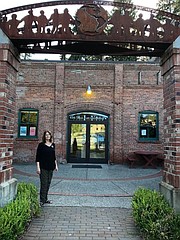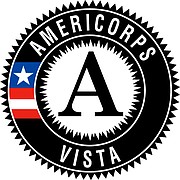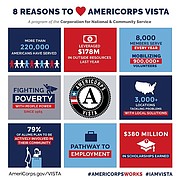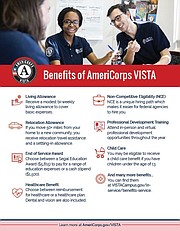Americorps: A different post-grad experience
Some people follow in their parents’ footsteps. Others take after their children.
Technically, Kathy Gurko had a few motivations of her own when deciding to join Americorps, but her three kids’ prior involvement with Americorps and related national corps programs didn’t hurt.
“Americorps just seemed like the way to go,” Gurko said.
“I think it's helped me implement and give me an outlet for what I want to do anyway. It's given me that venue to be able to impact society and impact people and that's what I want in my later life.”
Gurko’s son has worked in the Conservation Corps and was also briefly in the Job Corps, a national program which provides career and trade education to young adults aged 16 to 24. One of her daughters also served in the Conservation Corps and is now employed in disaster services through Americorps.
Even her second daughter worked with (although not in) Americorps through a university partnership.
So the national corps, and Americorps in particular, were a natural choice for Gurko.
The volunteer is retired, but recently finished college with a minor in nonprofit management. Americorps offered a way to pay back some of her student loans, a modest living stipend, and the opportunity to get back in the workforce after a short gap due to disability.
“You can build a resume in Americorps, you learn new things… [and] I’m interested in working for nonprofits at this stage in my life anyway,” she said.
“It’s an excellent program and I can’t say enough for it.”
Gurko is specifically a volunteer for the VISTA (Volunteers in Service to Americorps) program. According to the Corporation for National and Community Service website VISTA members volunteer in underserved areas “with the mission to strengthen organizations that alleviate poverty.”
VISTA members hold volunteer capacity-building roles with nonprofits, public agencies, and other community organizations. Their work is aimed at helping them garner resources and volunteers and “empower individuals and communities.”
“I do capacity building which is recruit[ing] volunteers to come in and do the work that needs to be done. That’s my function – recruit them and train them,” said Gurko.
“Because nonprofits cannot afford to run themselves.”
Potential volunteers fill out a lengthy application, detailing their volunteer experience, skills and background and then apply for a VISTA position. After they’re placed, members also undergo a background check.
Volunteers only need to be 18 years of age and can be a citizen, national, permanent residents or even refugees/asylum seekers, according to CNCS.
Americorps positions can be anywhere in the U.S. (including the Territories), but Gurko was happy to find one in North Idaho.
After working a few months with Family Promise, a local nonprofit dedicated to helping homeless families, Gurko took an open position with the Human Rights Education Institute.
“I had personal reasons for wanting to be in the area and they happened to have an opening. So I took advantage of it,” she said.
Approximately 8,000 VISTA positions are open each year. Although organizations may approach VISTA members directly based on their experience, Gurko was happy to apply when she heard an opportunity was available at the HREI.
“It's right up my alley as a person,” she said.
“I’m gaining a lot of knowledge at the Human Rights Education Institute… We’re in great change right now and I’m just really happy to be part of it.”
VISTA volunteer members receive a modest living stipend of about $500 every other week and serve for a minimum of one year, according to the CNCS. Gurko says members are also eligible for a limited healthcare allowance, although they don’t offer full health insurance.
“People would have to evaluate their own situation to see if it's going to be advantageous for them.”
For the first two years of service, members can also receive the Segal AmeriCorps Education award of about $6,000 (or a total of $12,000). Volunteers are still eligible for an end-of-service stipend after that.
The award attracts recent graduates, says Gurko, who can also gain valuable work experience and gain skills straight out of school.
“And you get to meet a lot of new people under the auspices of a very safe program,” she added.
The program suits Gurko well.
Gurko is halfway through her second year in Americorps, so she will receive another award to put toward her student loans this year. In some cases, Americorps may also provide a means to temporarily defer repayment of student loans.
“For me as a retired person it's very advantageous. I'm doing work that fulfills me and I am making a halfway decent living. I’m covering my needs.
“Plus I am in a service capacity which is where I wanted to end up and I get experience with different nonprofits.”
You can serve in Americorps for up to five years.
Which is what Gurko plans to do.
“I would choose to [stay], because it is an excellent program. I like its goals, I like the reason it was founded and the people are phenomenal.”
“They’re all about bettering society, and that’s what I’m about. So I’m in very good company.”
Gurko also hopes to stay in the area.
“I’m very happy here. I love Coeur d’Alene.”
Gurko says she’s happy to serve in an education role and proud to be a volunteer of the organization.
After all, through the mission statement “Be the greater good”, members are encouraged to “serve as an agent for change.”
“That's what education does. It changes you. Being a VISTA changes you,” Gurko said.
“You're put into different situations and different environments and you have no choice really but to change your paradigm, because you see a different part of life. And I like that.”
To learn more about Americorps and other service opportunities see Nationalservice.gov.











